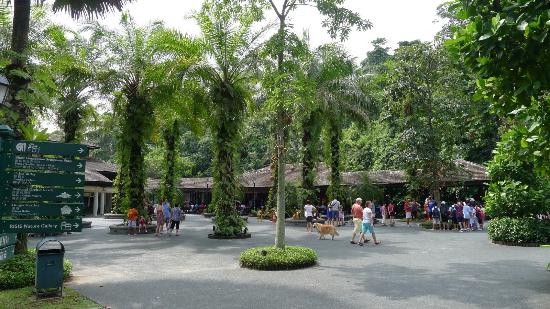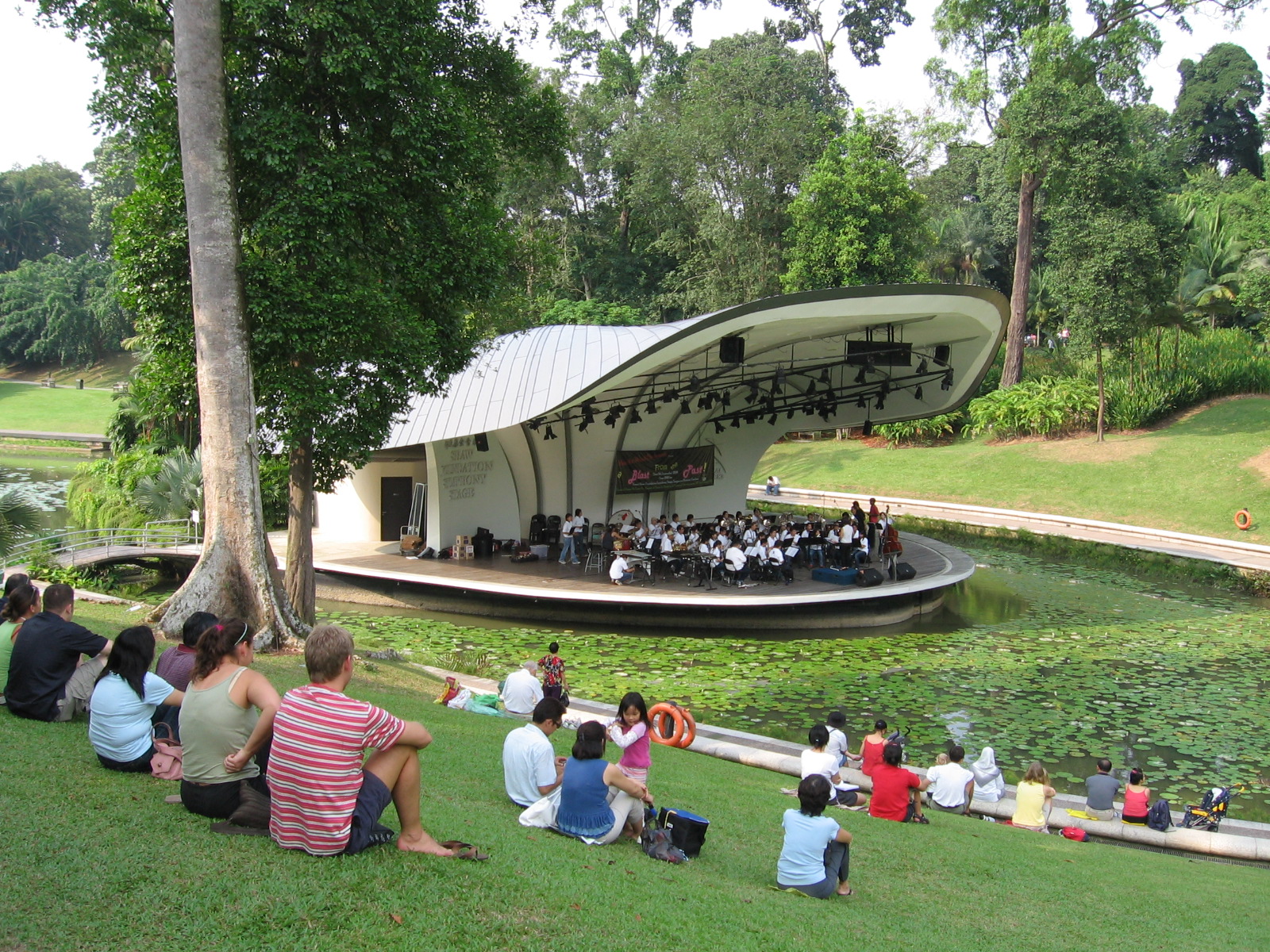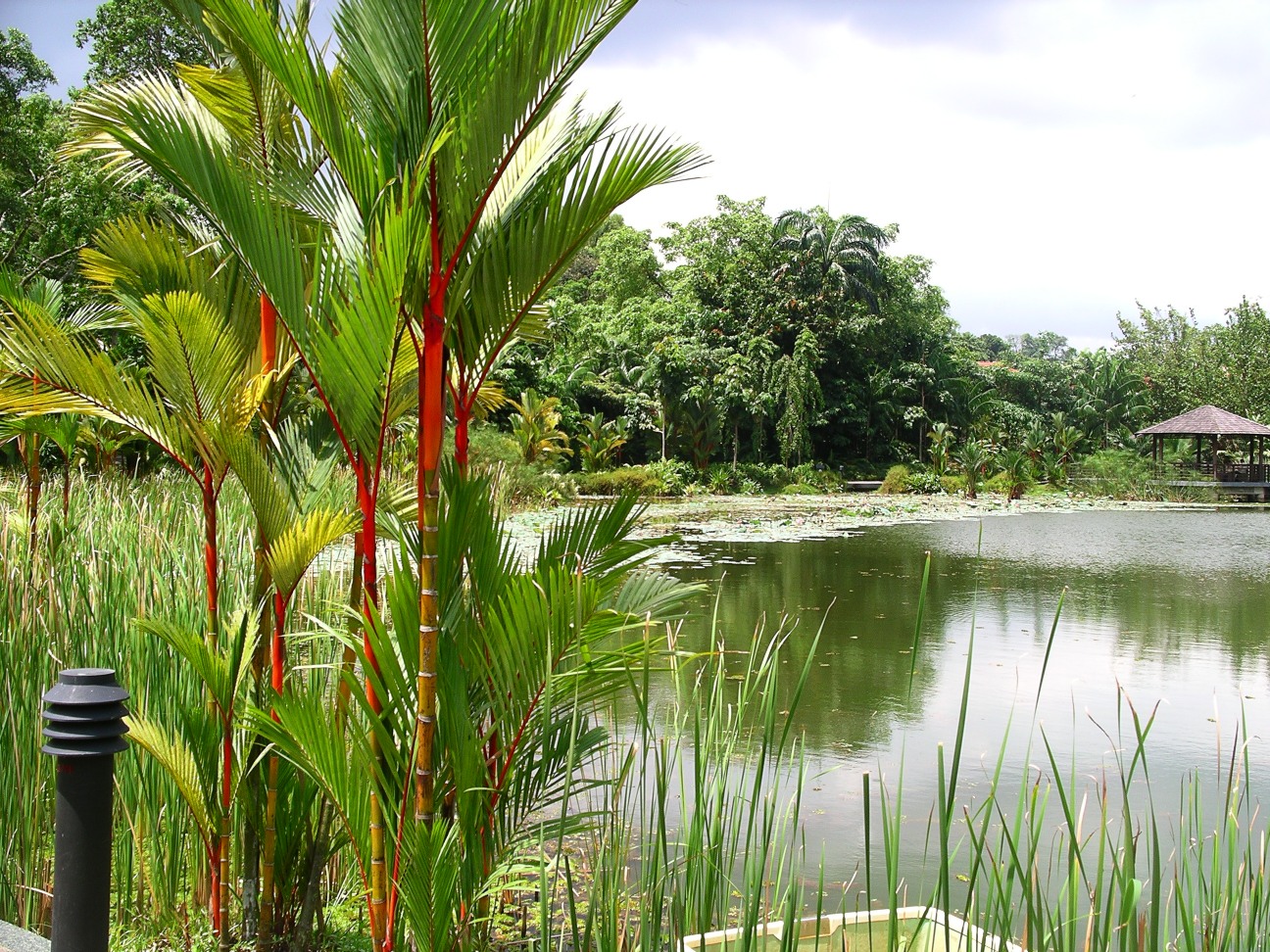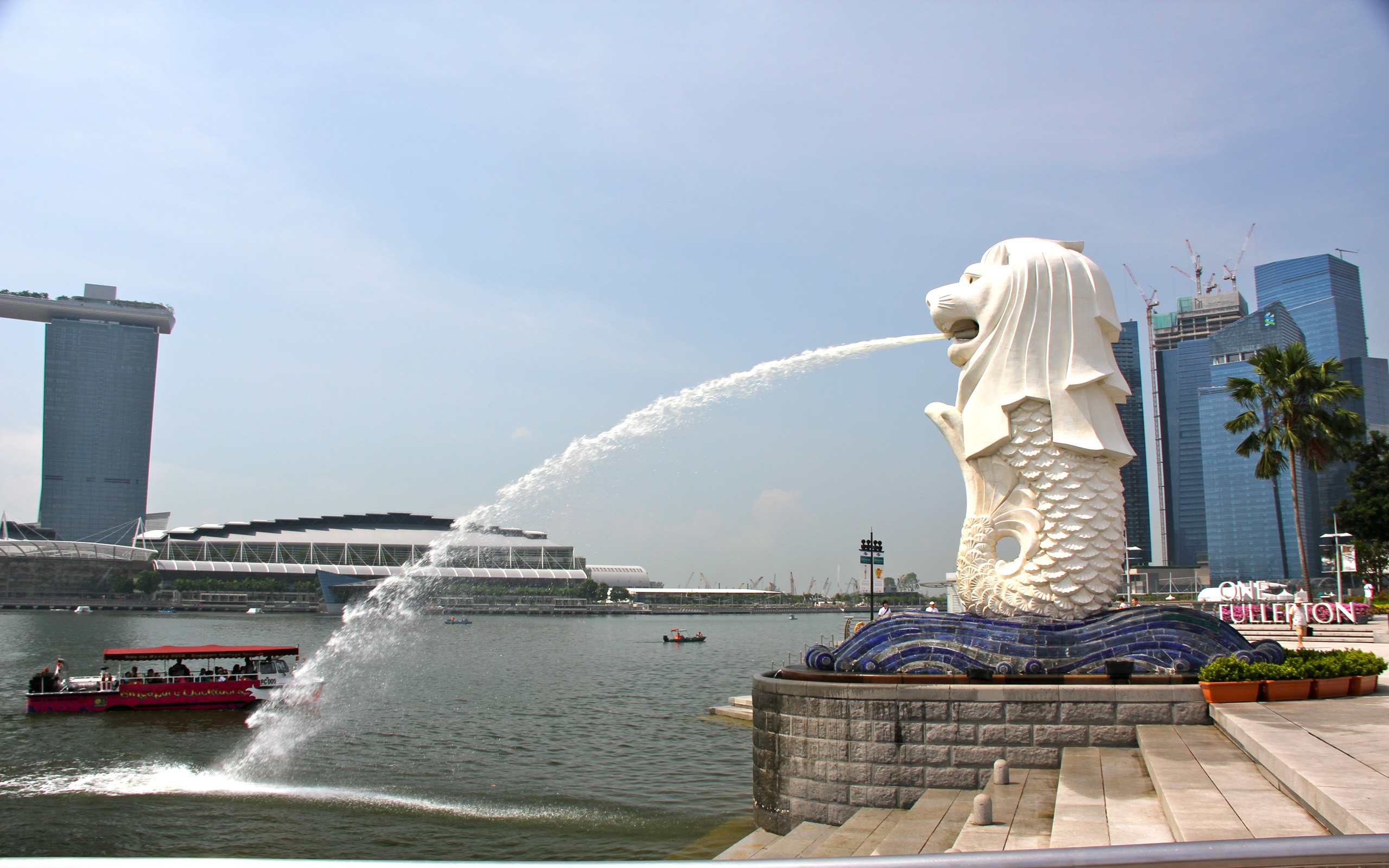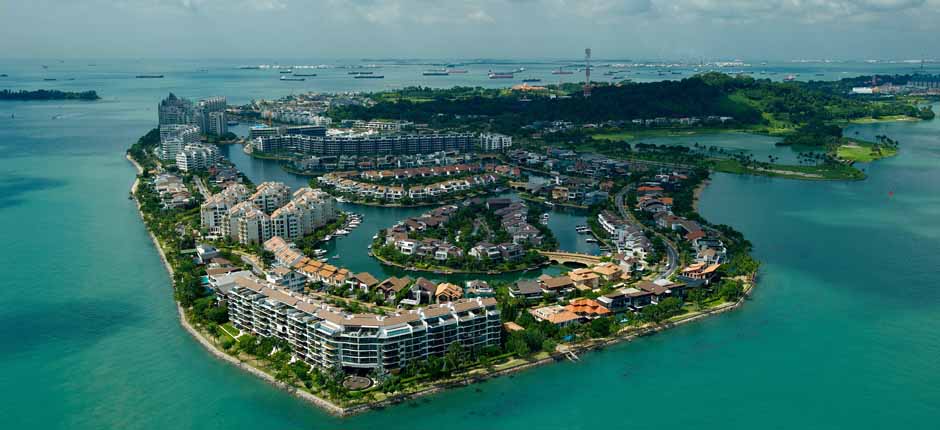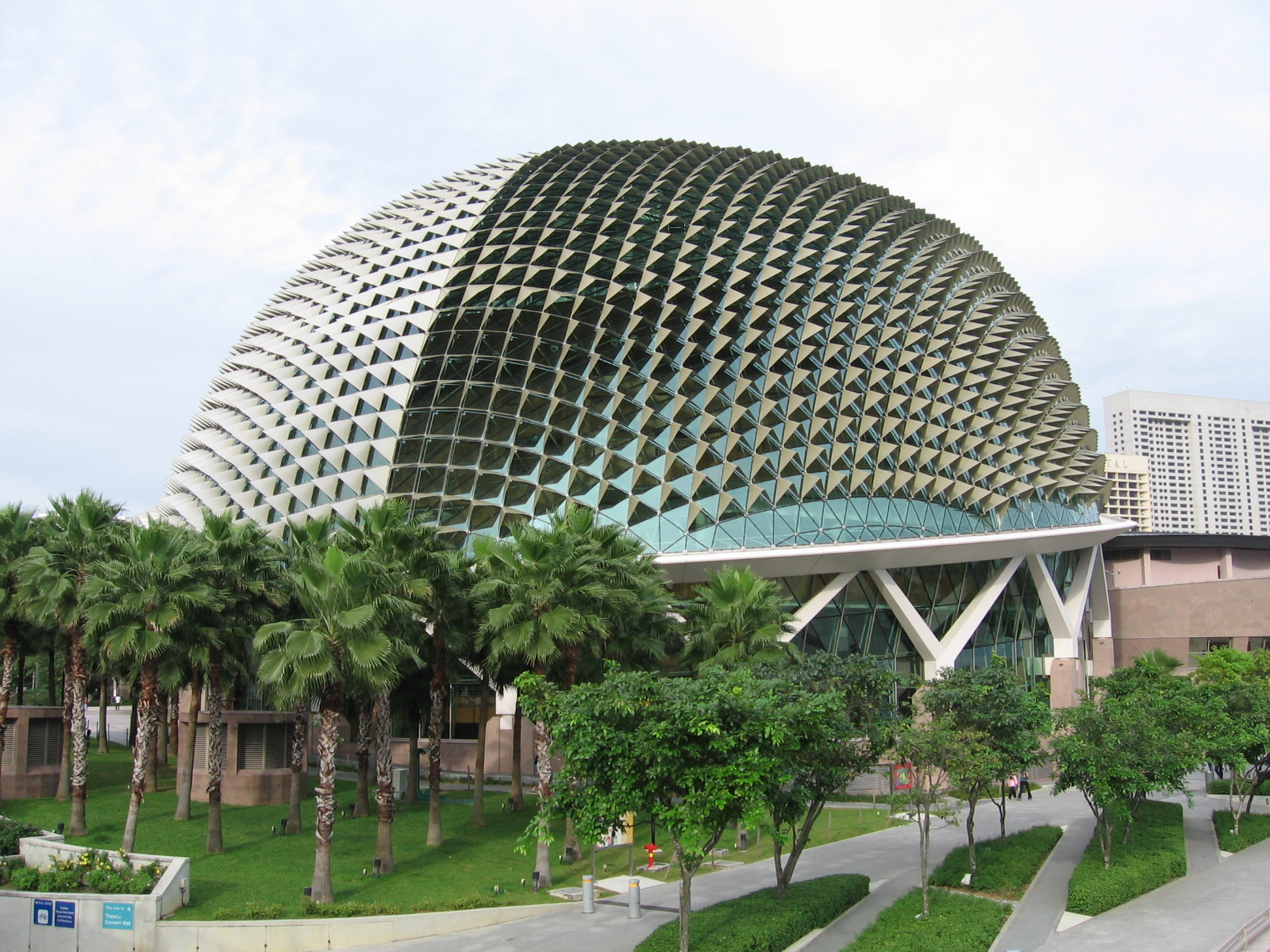Singapore /Singapore /Singapore
Sight Address : 1 Cluny Road, Singapore 259569, Singapore.Edit
Detail InformationEdit
The Singapore Botanic Gardens (Chinese: 新加坡植物园; Malay: Taman Botanik Singapura or Kebun Botani Singapura) is a 74-hectare[1] (183-acre) botanical garden in Singapore. It is the only botanic garden in the world that opens from 5 a.m. to 12 midnight every single day of the year, and does not charge an admission fee, except for the National Orchid Garden. The garden is bordered by Holland Road and Napier Road to the south, Cluny Road to the east, Tyersall Avenue and Cluny Park Road to the west and Bukit Timah Road to the North. The linear distance between the northern and southern ends is around 2.5 km (1.6 mi). In December 2012, an application for it to be listed as a UNESCO World Heritage Site was made.
HistoryEdit
The first “Botanical and Experimental Garden” in Singapore was established in 1822 on Government Hill at Fort Canning by Sir Stamford Raffles, the founder of modern Singapore and a keen naturalist. The Garden’s main task was to evaluate for cultivation crops which were of potential economic importance including those yielding fruits, vegetables, spices and other raw materials. This first Garden closed in 1829.It was not until 30 years later that the present Singapore Botanic Gardens began in 1859, when the Agri Horticultural Society was granted 32 hectares of land in Tanglin by the colonial government, which had obtained it from the merchant Hoo Ah Kay, known as Whampoa, in exchange for land at Boat Quay.Laurence Niven was hired as superintendent and landscape designer to turn what were essentially overgrown plantations and a tangle of virgin rainforest into a public park. The layout of the Gardens as it is today is largely based on Niven’s design. The Agri Horticultural Society, however, ran out of funds and, in 1874, the colonial government took over the management of the Gardens.The first rubber seedlings came to the gardens from Kew in 1877. A naturalist, Henry Nicholas Ridley, or Mad Ridley as he was known, became director of the gardens in 1888 and spearheaded rubber cultivation. Successful in his experiments with rubber planting, Ridley convinced planters across Malaya to adopt his methods. The results were astounding; Malaya became the world’s number one producer and exporter of natural rubber.Another achievement was the pioneering of orchid hybridisation by Professor Eric Holttum, director of the Gardens from 1925 to 1949. His techniques led to Singapore being one of the world’s top centres of commercial orchid growing. Today it also has the largest collection of tropical plant specimens.During the Japanese occupation of Singapore from 1942 to 1945, Hidezo Tanakadate (田中館秀三), a professor of geology from Tohoku Imperial University, took over control of the Singapore Botanic Gardens and the Raffles Museum. At the beginning of the occupation, he ensured that no looting occurred in the Gardens and the Museum. Both institutions continued to function as scientific institutions. Holttum and Edred John Henry Corner were interned in the Gardens and instructed to continue their horticultural work. The Gardens was also renamed as Shōnan Botanic Gardens (昭南植物園). Later that year, Dr. Kwan Koriba (郡場寛), a retired professor of botany from the Imperial University of Tokyo, arrived as Director of the Gardens, a post he held until the end of the war.
Must SeeEdit
Popular
Visiting TimeEdit
Daily 5am – 12am
National Orchid Garden
Daily 8.30am – 7pm
Closed OnEdit
N.A.
Best Season to VisitEdit
June to July and November to December.
Best Time To VisitEdit
N.A.
Time Required for SightseeingEdit
N.A.
Ticket Required : No Edit
Individual National Adult : N.A.
Kids : N.A.
Individual Foreigner Adult : N.A.
Kids : N.A.
Still Photo Camera : N.A.
Video Camera : N.A.
Guide Required : No Edit
Approximate cost: N.A.
Dress Code (If Any) : No Edit
Dress Require: N.A.
Restaurants NearbyAdd / Edit
How to ReachEdit
Taxi : Taxis are generally very hard to get during peak hours (Mon-Fri 7:00am – 9:30am and Mon-Sat 5:00pm – 8:00pm) and on rainy days. If you are at a hotel, have conceirge call you a taxi. If you are out about town and have access to a cell phone- calling for a taxi will cut your wait time by 20 to 30 minutes. All taxis are fitted with meters; all are air conditioned; the majority of the taxis are 5-seaters; about 90% of taxis have radiophones; call booking is done via GPS or digital voice dispatch. All passengers must fasten their seat belts by law.
For taxi Booking fee is SGD $2.3. Minimum fare for taxi is SGD $3 for first 1Km. Fare above minimum fare until 10Km is SGD $0.55 per Km. Fare above 10Km is charge SGD $0.628 per Km. Taxi Waiting charges per hour is SGD $17.6. Peak Hours charges is diffrent.
Bus : Public buses run daily from 5.30am to midnight. Extended night services cost slightly more (a flat rate ranging from $1.50-$3.00). Otherwise, most fares depend on distance travelled and range from 67 cents to $1.58 for air-conditioned comfort (almost all public buses in Singapore have air-conditioning today). There are also “feeder” bus services that charge a flat rate of 67 cents. Each bus should not take more than 15 to 20 minutes to arrive at the bus stop.
Train : Singapore MRT system is very well connected to different parts of Singapore and very clean! If you have the time and plan to explore around little Sunny island, get the the Singapore Tourist Pass!
It runs 6am-12mn, fares start at S$1 (70cents in EZ link). Tickets can be purchased in all MRT stations. You just have to insert your money through the ticket machine. Rush hour’s usually 7am-9am, 11am-2pm and 4pm-7pm.
Air : Changi Airport is the country’s main airport. From the airport there are a number of ways to get into the city:
Taxi is easiest – simply follow the signs after clearing customs. Meters are always used in Singapore and prices are reasonable. A trip to the city during the day will be between $20-$30 including $3-5 airport surcharge. An additional 50% surcharge applies between midnight and 06:00.
Limousines charge a flat $50 to anywhere in the city and are a pretty good deal after midnight, as you can skip the queue and avoid the surcharge. The same pricing applies to chartering van-sized MaxiCabs, which are good for large families or if you have lots of baggage.
Shuttle – Shared six-seater MaxiCab shuttle service to designated areas/hotels costs $7 and can be booked in advance or in the arrivals hall. 6AM-2AM, every 15-30 min.
Subway – MRT trains run from a station between T2 and T3, but you’ll need to change trains at Tanah Merah to a city-bound train: just exit through the left hand side door and cross the platform. The 30 min ride to City Hall station costs $1.90 plus a refundable $1 deposit, and trains run 05:31-23:18.
Bus – Bus terminals can be found in the basements of T1, T2 and T3. 06:00-23:59 only. Fares are less than $2.00, exact fare required (no change given) if you pay cash.
Others : N.A.
Things to CarryEdit
Safety / WarningEdit
- Please be advised that all bags and personal items are subject to inspection.
HelplineEdit
- Police: 999
- Emergencies/Ambulance/Fire Brigade: 999
- Police Hotline: 1800 353 0000
- Non-emergency ambulance: 1777
- Flight Information (24-hours): 1800-542 4422
- Tourism Information (24-hours): 1800-736 2000
